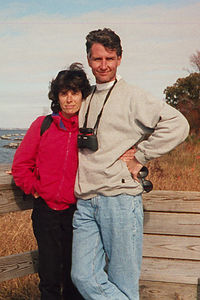- Home
- About
- Map
- Trips
- Bringing Boat West
- Migration West
- Solo Motorcycle Ride
- Final Family XC Trip
- Colorado Rockies
- Graduates' XC Trip
- Yosemite & Nevada
- Colorado & Utah
- Best of Utah
- Southern Loop
- Pacific Northwest
- Northern Loop
- Los Angeles to NYC
- East Coast Trips
- 1 Week in Quebec
- Southeast Coast
- NH Backpacking
- Martha's Vineyard
- Canadian Maritimes
- Ocracoke Island
- Edisto Island
- First Landing '02
- Hunting Island '02
- Stowe in Winter
- Hunting Island '01
- Lake Placid
- Chesapeake
- Provincetown
- Hunting Island '00
- Acadia in Winter
- Boston Suburbs
- Niagara Falls
- First Landing '99
- Cape Hatteras
- West Coast Trips
- Utah Off-Roading
- Maui
- Mojave 4WD Course
- Colorado River Rafting
- Bishop & Death Valley
- Kauai
- Yosemite Fall
- Utah Off-Road
- Lost Coast
- Yosemite Valley
- Arizona and New Mexico
- Pescadero & Capitola
- Bishop & Death Valley
- San Diego, Anza Borrego, Joshua Tree
- Carmel
- Death Valley in Fall
- Yosemite in the Fall
- Pacific Northwest
- Utah Off-Roading
- Southern CA Deserts
- Yosemite & Covid
- Lake Powell Covid
- Eastern Sierra & Covid
- Bishop & Death Valley
- Central & SE Oregon
- Mojave Road
- Eastern Sierra
- Trinity Alps
- Tuolumne Meadows
- Lake Powell Boating
- Eastern Sierra
- Yosemite Winter
- Hawaii
- 4WD Eastern Sierra
- 4WD Death Valley +
- Southern CA Deserts
- Christmas in Tahoe
- Yosemite & Pinnacles
- Totality
- Yosemite & Sierra
- Yosemite Christmas
- Yosemite, San Diego
- Yosemite & North CA
- Seattle to Sierra
- Southwest Deserts
- Yosemite & Sierra
- Pacific Northwest
- Yosemite & South CA
- Pacific Northwest
- Northern California
- Southern Alaska
- Vancouver Island
- International Trips
- Index
- Tips
- Books
- Photos/Videos
- Search
- Contact
Eastern Neck National Wildlife Refuge, MD
Sunday, November 12, 2000 - 2:00am by Lolo
55 miles and 1.25 hours from our last stop
Travelogue
 Lolo and Herb birdingRather than drive straight home on our last day, we decided to squeeze in one more stop—this is my trademark. Herb likes to call it “stuffing 10 pounds into a 5 pound bag.”
Lolo and Herb birdingRather than drive straight home on our last day, we decided to squeeze in one more stop—this is my trademark. Herb likes to call it “stuffing 10 pounds into a 5 pound bag.”
We had really enjoyed Blackwater the day before, so we decided to stop at another, smaller and lesser known wildlife refuge called Eastern Neck, located on a remote island just north of the bridge, where the Chester River meets the Chesapeake. It was a bit out of the way, but the drive was scenic and we were in no particular hurry.
Like Blackwater, this refuge is home to over 240 bird species, including bald eagles. peregrine falcons, and tundra swans. Although we weren’t able to bike here, we did take advantage of the lovely nature trails that meandered through the grasslands, woods, and marshes of the refuge and out to the open waters of the Chesapeake and Chester River.
Although not as dramatic as the places we’ve been to in the West, this place had a different kind of beauty and serenity.
Description
The Eastern Neck National Wildlife Refuge is another one of the many beautiful refuges that dot the Delmarva Peninsula. Much smaller than the Blackwater National Wildlife Refuge described in the previous stop, Eastern Neck is much smaller and much less visited. The main reason for its lack of visitors is that it is located on an island at the mouth of the Chester River in view of the Chesapeake Bay Bridge, but requires a round-about journey of 50 miles to get there. Then the only place to go is to turn around and do it all over again.
Like the other refuges on the Delmarva Peninsula, this 2,285-acre island serves as a haven for thousands of migrating or wintering birds. The refuge provides a natural habitat for over 240 bird species, including the American bald eagle and the peregrine falcon. It is also a major staging site for tundra swans.
There is much opportunity for wildlife observation and photography along the walking trails in the refuge. The Tubby Cove Boardwalk features an observation blind overlooking the inlet waters of the Chesapeake Bay. Three other wildlife trails expose visitors to the refuge’s major habitats, which include woodlands, grasslands, marsh, open water, and cropland. The island also has approximately 15 miles of shoreline.
- ‹ previous
- 6 of 7
- next ›
